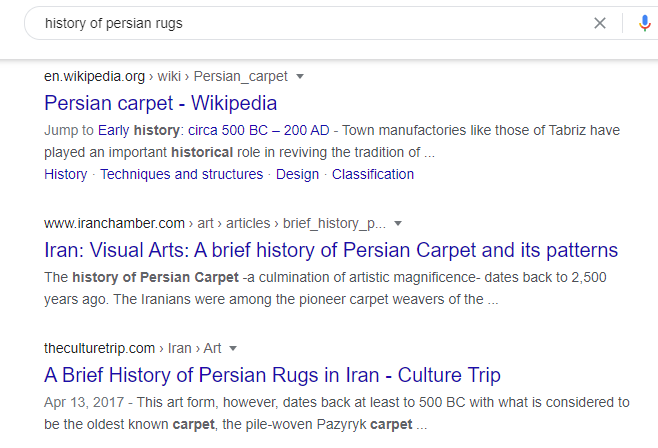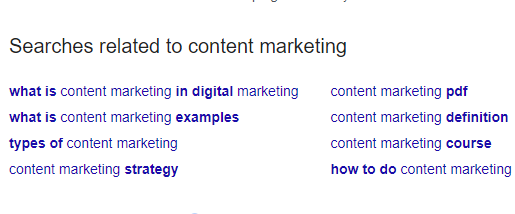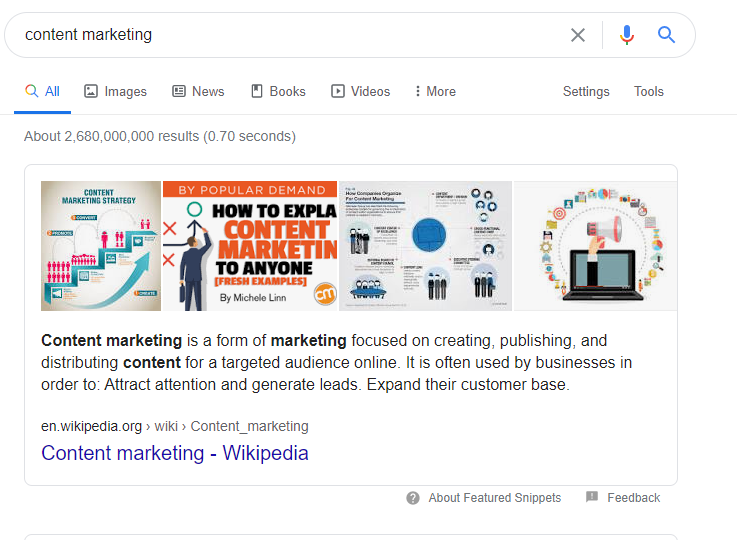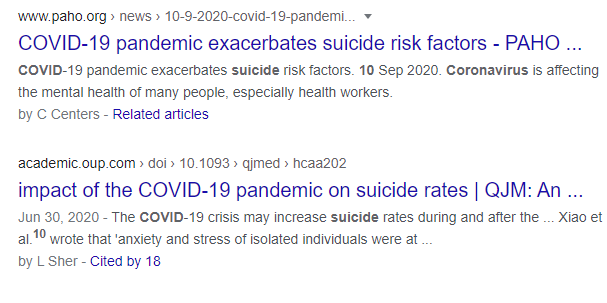8 Essential SEO Copywriting Rules You Need to Follow
8 Essential SEO Copywriting Rules You Need to Follow
It’s no secret that Google tweaks it’s search algorithm every now and then, making it trickier to create content that ranks with every passing year.
Although this constant improvement is in the favour of millions of Google users, it can become a cause of anxiety for copywriters and SEO experts.
The thing is, when the rules are changing so often, how is one supposed to develop a winning strategy?
Here’s a tip: Follow the basic fundamental SEO copywriting rules and manage to maintain your search engine rankings year in and year out.

Before we really dig deep into the SEO copywriting rules, let’s have a brief discussion on how following these rules can push your web traffic and SEO rankings to new heights, while enabling you to convince the readers to follow your CTA.
To be precise, SEO copywriting is about creating interesting, informative, and compelling content that’s also optimized for search engines.
In other words, the content you create should be for the benefit of your audience, but optimized nonetheless.
And, remember, your readers come first. Understand that you need to provide them with a great experience before going for the optimization tactics.
How to Create Content for Readers and Optimize for Google?
These SEO copywriting rules are followed by every single top digital marketing agency that provides SEO services in UK, or anywhere else around the globe:
- Closely Understand Keyword Intent
- Provide the Solution They’re Looking for
- Keyword Stuffing Does More Harm Than Good
- Write Like Your Customers Talk
- Aim for the Featured Snippet
- Give Your Headlines a Little Extra Attention
- Optimize the Meta Tags
- Voice Search Optimization Has Become Crucial
1. Closely Understand Keyword Intent
As most digital marketers say, before you start writing a sales copy, blog article, web content, or content for social media posts, it’s important to get into the buyers’ shoes.
You need to understand what the prospective customer would be thinking, things that they’re probably typing in Google’s search bar, and the reason behind those searches.
For example, if you’re a company that provides Google Ads services in UK, your prospects are those searching for such services online. You can create content related to Google Ads and the problems that might be faced by those availing these services.
The content created must be informative and it should match the keyword intent. Such as, if you’re trying to rank for the keyword “history of Persian rugs” with the pricing page for your rug repair services, you most likely won’t succeed in securing the top ranking positions on Google.

2. Provide the Solution They’re Looking for
When it comes to SEO copywriting, the major goal is to create content that’s useful and relevant. You don’t need long paragraphs of introduction. Get to the point, provide a solution, and your readers would stay engaged.
An effective way of letting Google know that your content is relevant is by using the target keyword in the very first paragraph of your blog article.
While doing so, remember that the keyword must appear in a natural manner without disturbing the flow of your content.
3. Keyword Stuffing Does More Harm Than Good
Since we’re talking about adding keywords in the content you create, here’s another major SEO copywriting rule: Refrain from unnecessary keyword stuffing.
This doesn’t mean you shouldn’t aim for high keyword density.
It means, you can’t excessively target your main keyword. Because doing so won’t improve your position in the organic search results, rather it can kill your SEO.
Firstly, Google’s search algorithm has improved a lot over the past years, and the giant search engine no longer falls for content like:
“Having an Ecommerce store is important. With an Ecommerce store you can reach new customers because an Ecommerce store allows you to sell globally. Ecommerce stores are also open 24/7…”
If you are offering ecommerce website development in UK, better create content that your customers would find useful. And don’t forget to add a CTA.
Too much keyword stuffing can cause your readers to get agitated and leave soon.
So, even if you’re getting the traffic, there won’t be much improvement in your rate of conversions. And that just means you wasted a huge amount time and energy for nothing.
4. Write Like Your Customers Talk
Another of the essential SEO copywriting tools is engaging writing style.
While writing for the general public or customers who don’t have advanced technical knowledge, avoid using too many jargons. You want the readers to understand what you’re saying.
Create content that’s infused with phrases your customers commonly use. You can find these terms in Quora. Type in your main keyword in Quora’s search bar and related queries would pop up.
Additionally, you can also look at the related search results that appear at the very bottom of Google’s SERPs.

Add some of these phrases in your content and your SEO copywriting would be improved immensely.
5. Aim for the Featured Snippet
If you don’t already know this, a featured snippet is the little box of content that sometimes appears with the top-ranking search result on Google. Here’s what I’m talking about:

As it was mentioned by Rand Fishkin back in August 2019, less than half of Google searches result in a click on any of the search results.
Surprising?
One of the reasons why searchers don’t feel the need to click on any of the search results is because they find enough information in the featured snippets.
So, what does that mean for your SEO copywriting?
Whenever you can, such as when writing detailed blog articles, aim for the featured snippet.
What you need to do is answer a question or provide solution to an issue within two to three sentences, and then wait for Google to do the rest.
How would this benefit your business in general?
Apart from the fact that your post would be ranking on the very top of Google’s search results (below the Google Ads, however), securing a feature snippet can help delight the customers and improve your brand image.
6. Give Your Headlines a Little Extra Attention
This SEO copywriting rule can help increase your web traffic tremendously.
Always remember, headlines and titles are what lures readers.
You need a title that captures attention and forces your target audience to click on the link.
For this, the key is: “curiosity”.
For example, if you want your audience to know that you’re providing the best social media marketing services, try writing a blog post titled “9 ways social media marketing can boost your sales” or “how can social media marketing increase your revenue generation”. These titles are likely to build curiosity in potential customers who may then start thinking of partnering up with a social media services provider, such as you.
You can further add in a compelling call-to-action. Tell them to choose the best agency and give in your link.
Another great way of adding a CTA is by creating a sense of urgency with the use of phrases such as, start your free trial, avail the best deal, etc.
To put it precisely, a great headline is what would get you traffic. And once you have the desired traffic, you can put in your best efforts to convert readers into buyers.
7. Optimize the Meta Tags
As important as it is to create engaging and creative headlines, there’s one major rule you need to follow.
The title of your blog post must be 50-60 characters long only. Titles longer than this are cut off in the search results and that doesn’t look too good.

In addition to the title, the meta description that appears below the title is also crucially important.
A lot of searchers look at the meta description before deciding to open any link, so clearly state what your blog post is about and how would reading it benefit them.
Add in the main keyword too, because Google would be checking to see if the post is relevant or not.
Bonus tip: Start the meta description with an action verb, such as learn, find out, check, etc.
8. Voice Search Optimization Has Become Crucial
According to the recent voice search statistics and trends, as much as 40% adults use voice search at least once daily, and this percentage is likely to increase in the coming years.
So, if you’re still ignoring voice search optimization, you’re not making yourself future-proof, and are probably losing lots of customers already.
This being said, try optimizing the content you create for question-based words, because more than 20% of voice searches are triggered by words such as how, when, why, where, best, free, good, etc.
These were the top-most essential SEO copywriting rules, and when you’re following them, don’t forget to step into the buyers’ shoes and try to think what they’re thinking.
Remember, your content is for the people, and it should be based on topics that’re of interest to your target audience.
Lastly, if you don’t have the time, energy, or expertise to handle your site’s SEO all by yourself, get assistance from an SEO agency in Leeds, or wherever else you’re located.
By - 28 Sep 2020
Most Viewed Articles
-

By - 16 Mar 2020
9 Key Elements of an Effective Social Media Marketing Strategy -

By - 27 Mar 2020
5 Major Factors that can Impact Your Local SEO in 2020 -

By - 29 Jan 2021
Digital Media Marketing Agencies: 7 Predictions for 2021 -

By - 01 Oct 2021
6 Rank Tracker Tools to Check Google Rankings -

By - 16 Mar 2020
4 Most Important Ranking Factors for Local SEO in 2020
